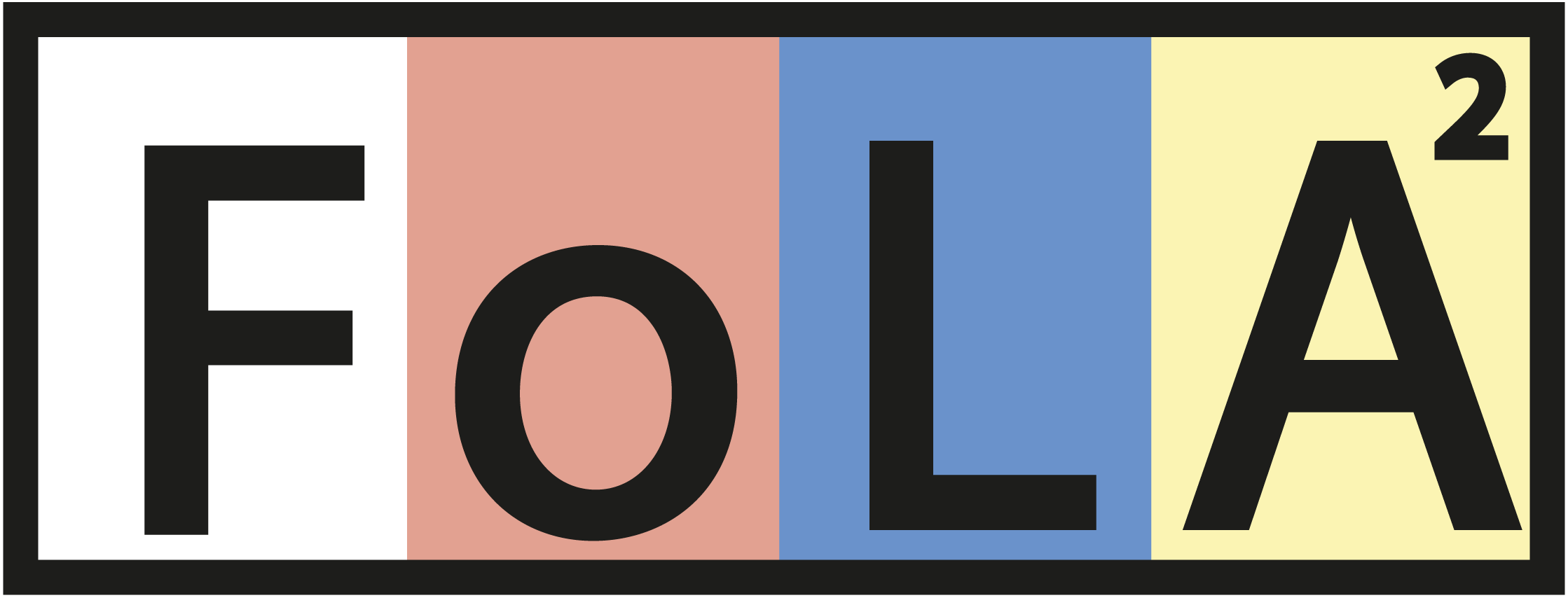8 Steps
The FoLA2 method is based on the 8 steps of the Design Cycle for Education (DC4E). These steps give us a clear walkthrough, but the method can be used while skipping steps or starting on a specific step.
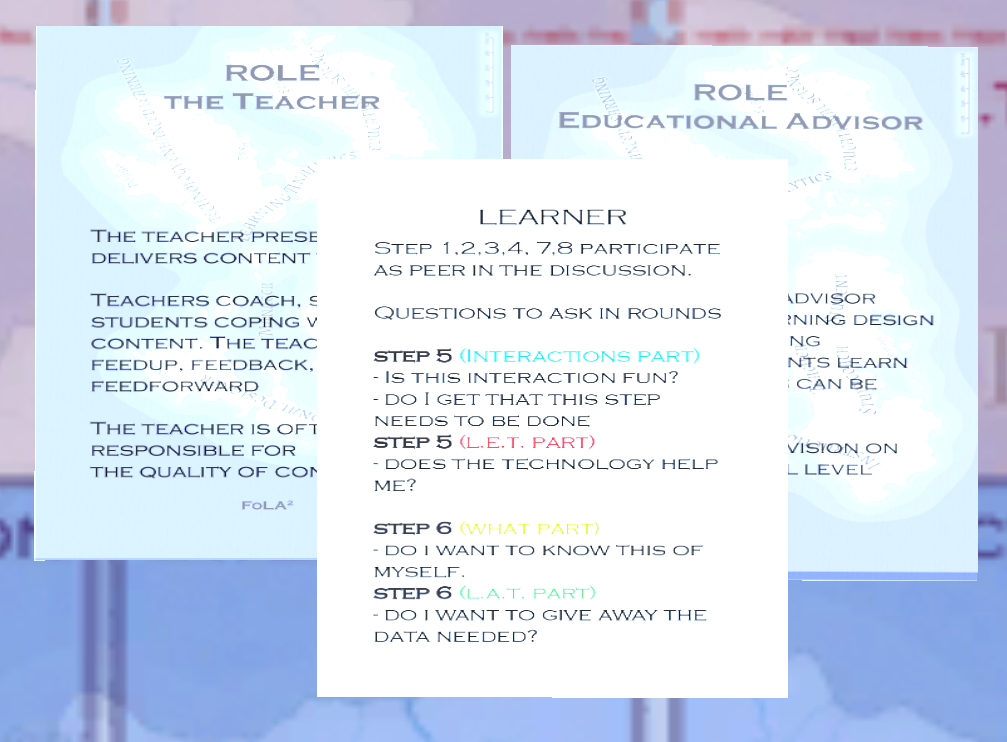
Step 0: Role cards
Before the game starts, every player gets one or two role cards, e.g., student, teacher, course designer, manager. These cards include a role description and some questions to be asked during the game.
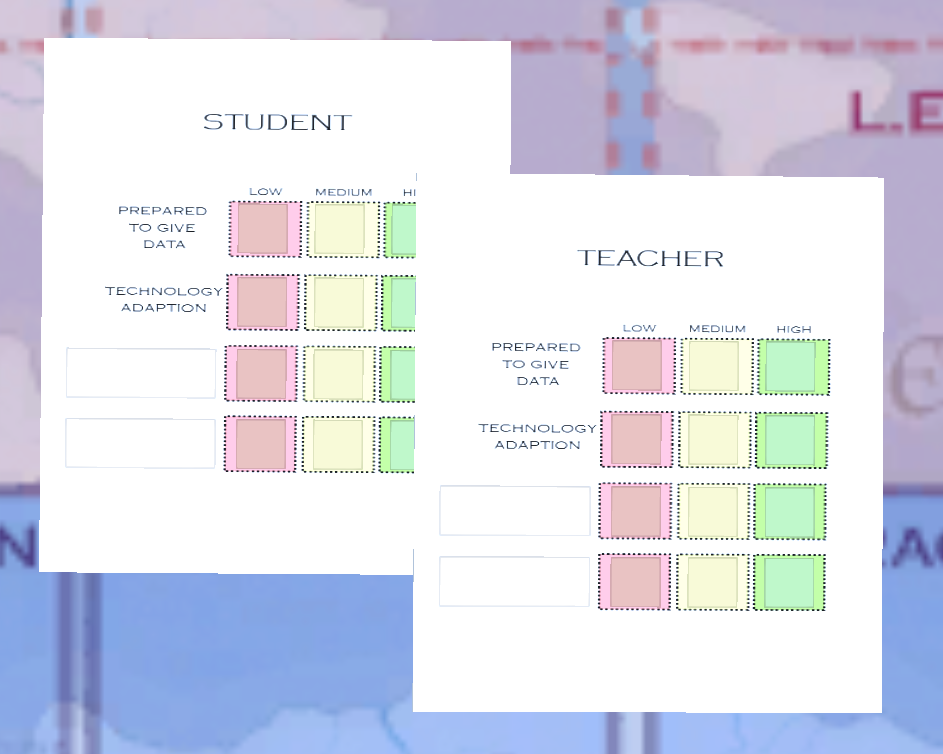
Step 1: Goal and population
First, the players decide which learning activity to design, and its intention needs to be declared. Then population is selected. One or more student and teacher cards are selected or randomly chosen to represent the learning activity’s target group. Every student and teacher card has a set of characteristics(readiness to give data on learning behavior, technology adaptiveness, motivation).
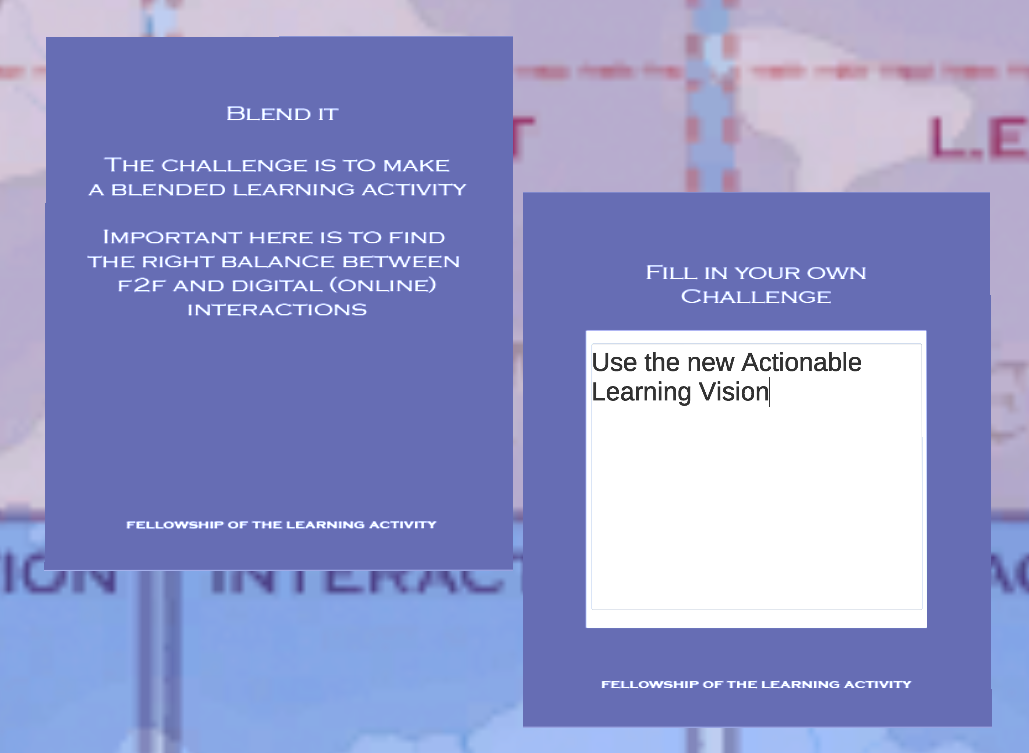
Step 2: Challenge
The manager can add an organizational challenge, or the game leader can add a challenge to get specific input from the players or to state boundaries and challenges in the environment where the learning has to take place.
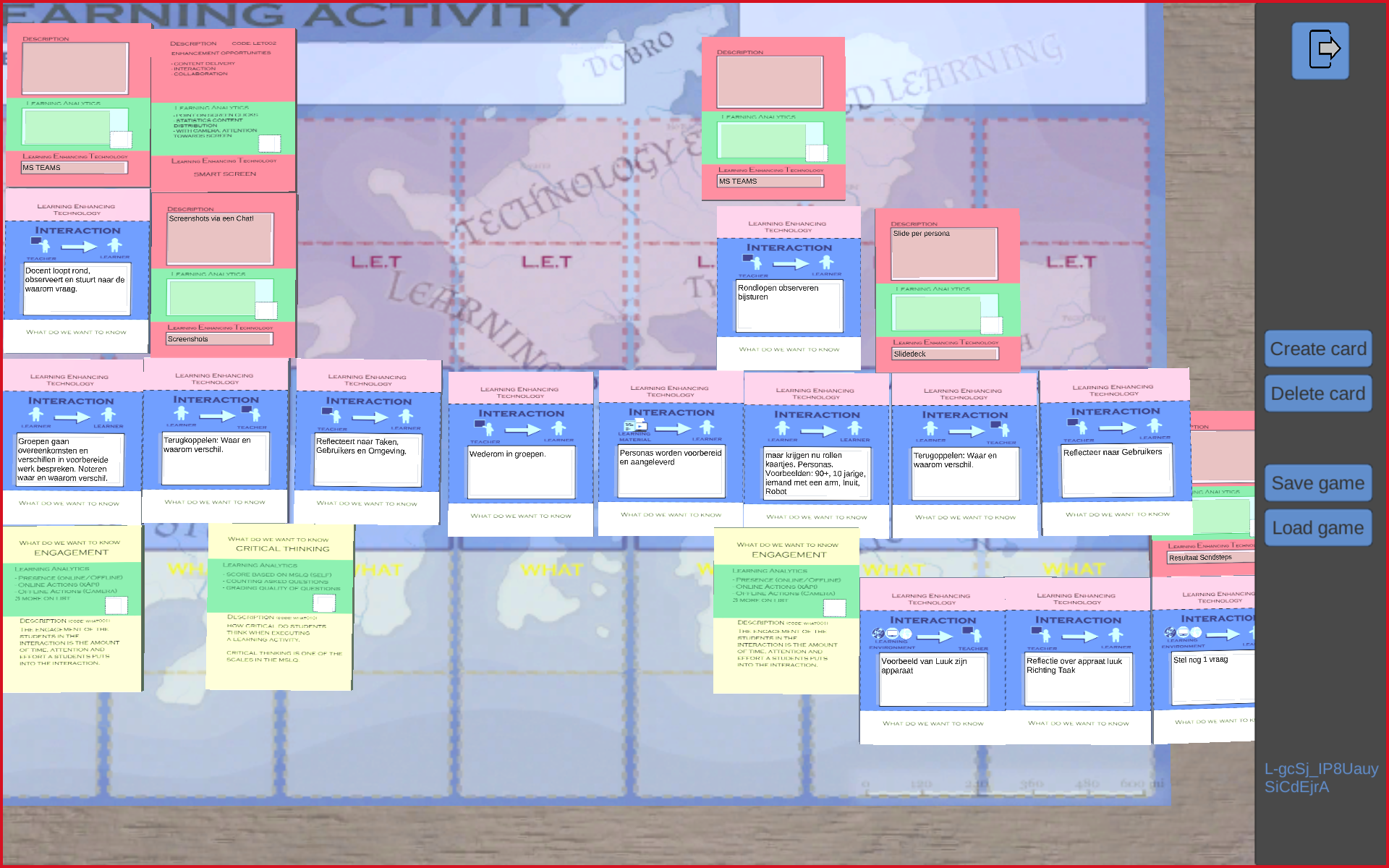
Step 3: Inspiration
During this step, best, suitable, and harmful practices are shared to learn from past decisions.
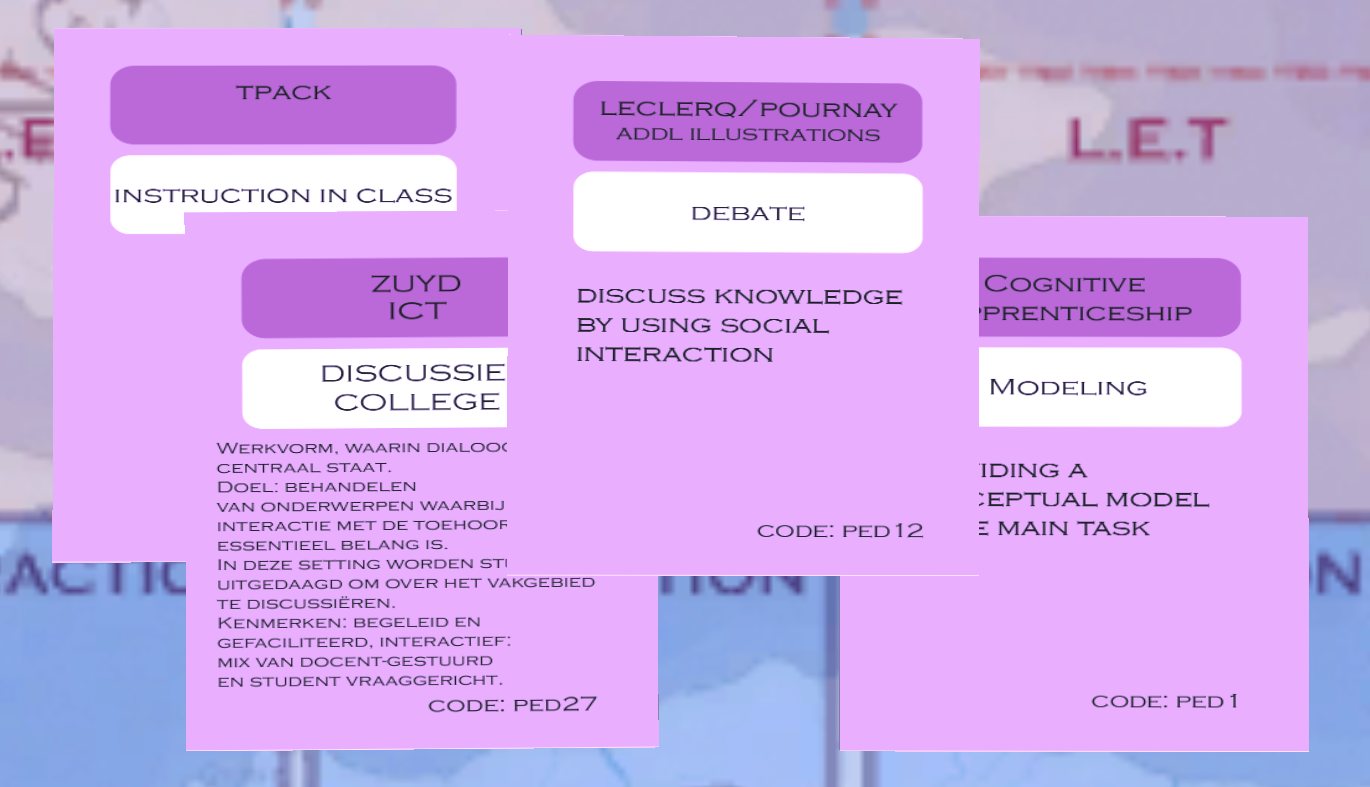
Step 4: Analysis / Activity type
In the analysis phase, players select or randomly choose the pedagogy or educational vision. Everypedagogy or educational concept has a set of learning activity-type cards. Examples are lectures, discussion groups, workshops, case studies, and self-study.
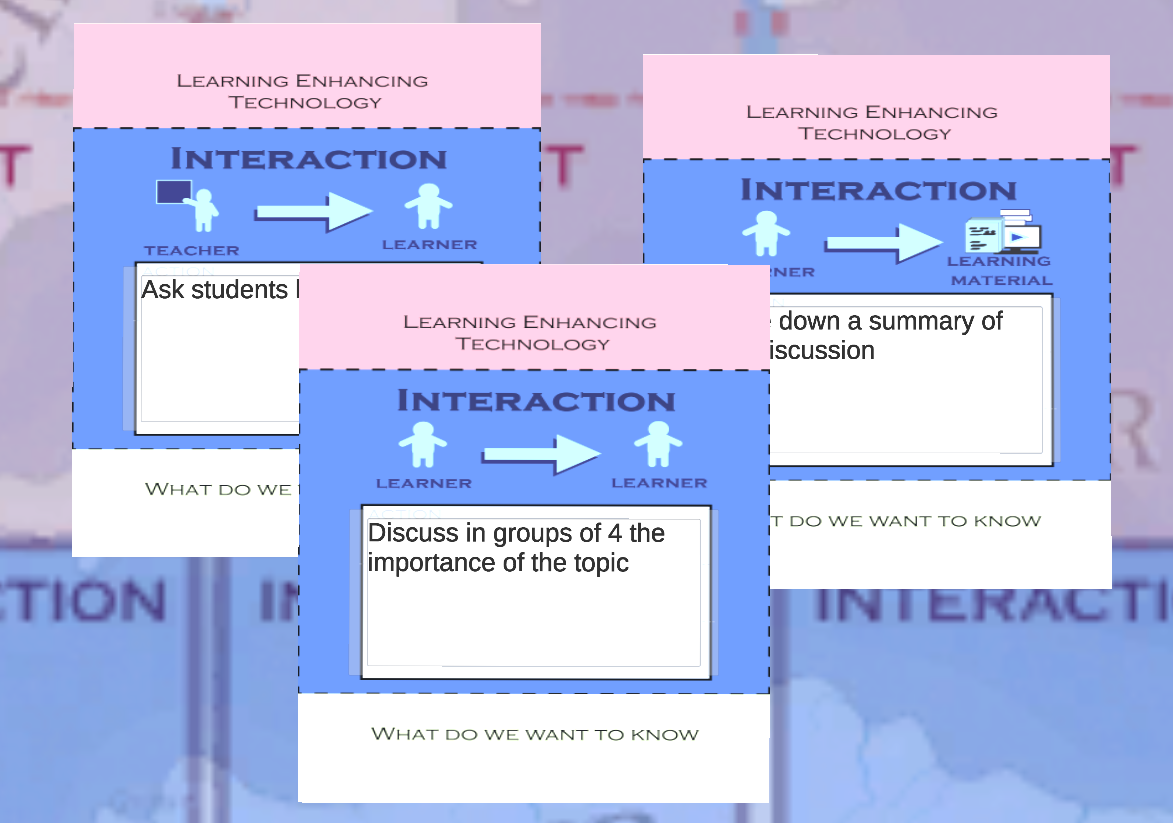
Step 5: Development / 5.1 Interactions
This step has two actions. First, a sequence of interactions between students and teachers, students and other students, students and learning material, or students and the environment is selected. For every interaction, the players add short text snippets on the interaction (and, optionally, the intention of this specific interaction). There do not have to be ten interactions, and players may use interaction types more than once.
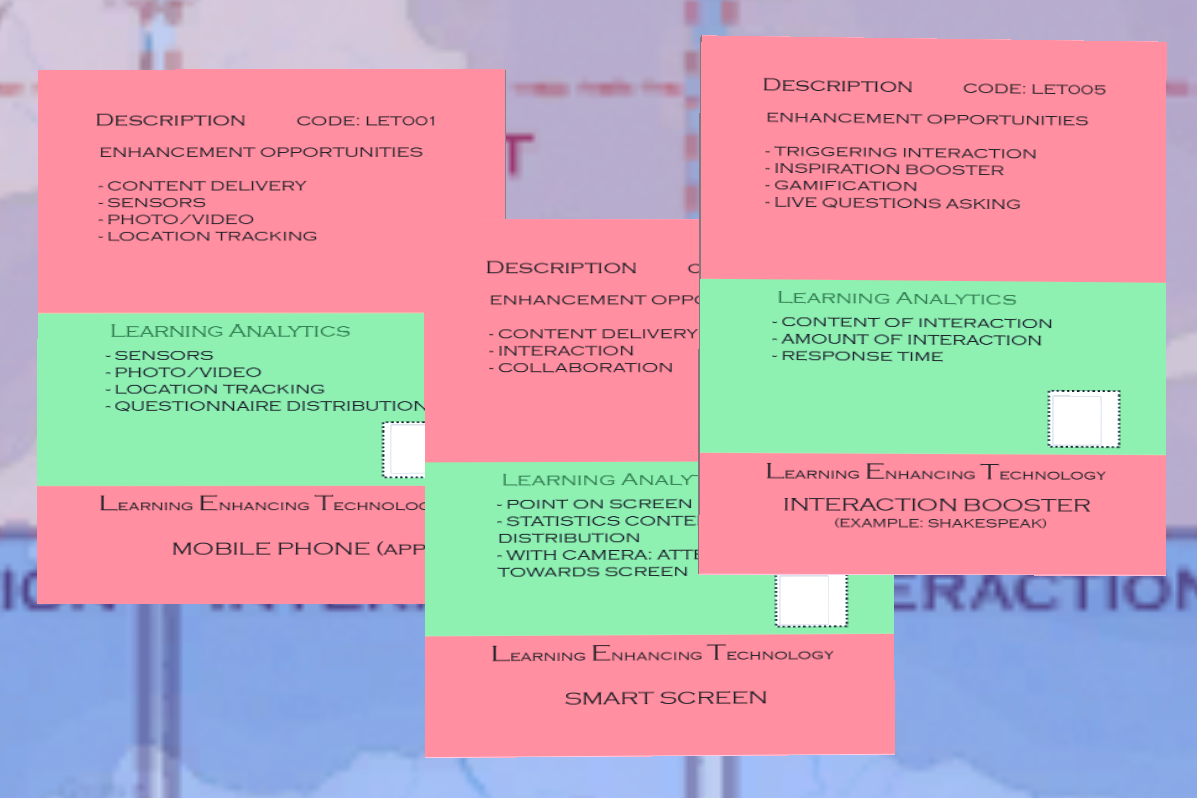
Step 5: Development/ 5.2 L.E.T.
Second, participants check for every interaction whether a Learning Enhancing Technology (LET) are available. There is room for two LETs per interaction. Each technology has a green LA element.
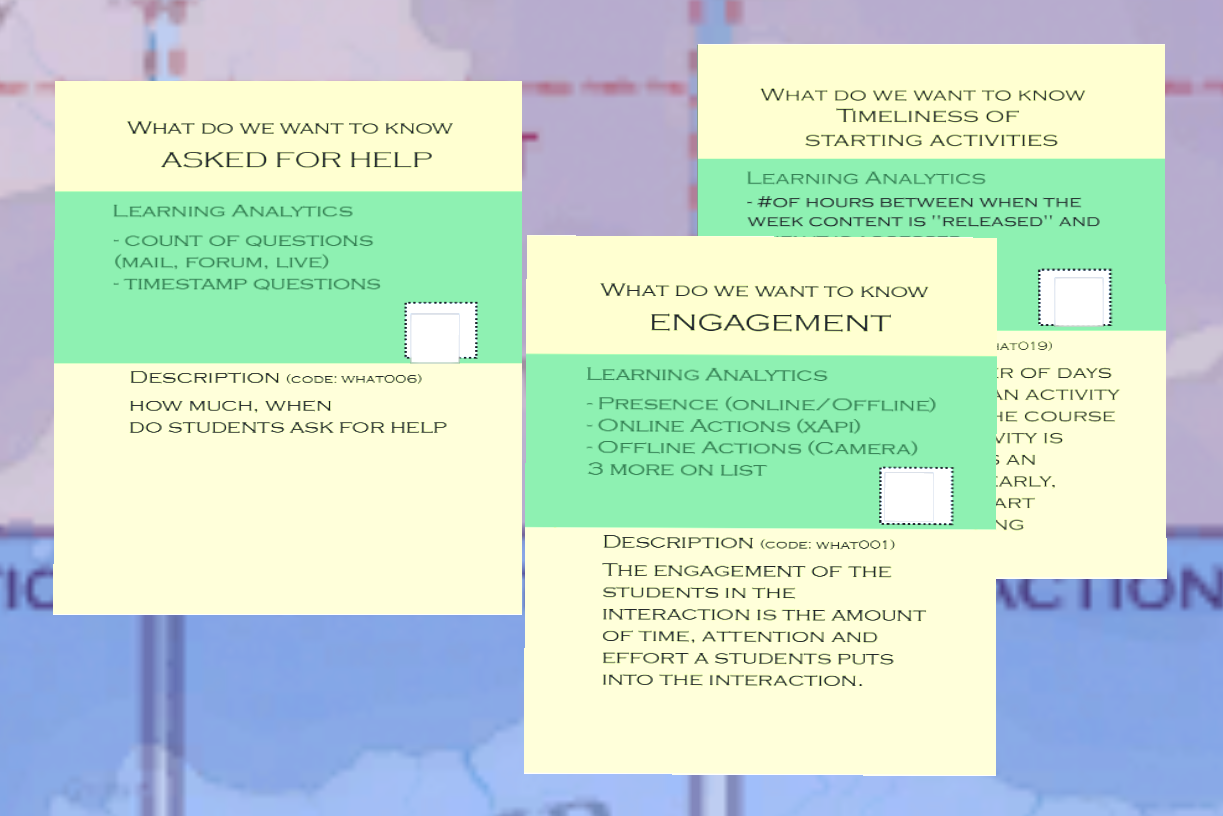
Step 6: Prototype / Measure & present
Players can select one or more yellow “what do we want to know” cards per interaction. These are indicators or items where different stakeholders state what they want to know from the interaction. Every yellow card has a green LA part describing the measuring tooling. A set of yellow and red cards is available if they are applicable. Each of them has a square to place a token with a number. Every number stands for a data element that is measured. Players decide what and how many data elements to use as input for evidence.

Step 7: Simulation / Green parts
In this step, we look again at the population cards and decide if the choices made in the Interactions, the LETs, and the “what do we want to know” cards fit the population or if the population will react by not agreeing to give away the data elements.

Step 8: Adaptation
If needed, players choose cards that can be adapted based on the simulation or the actual run of the activity.
